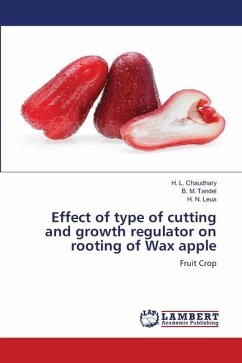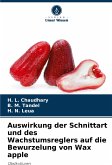The wax apple, scientifically known as Syzygium samarangense, is a tropical tree that can reach heights of 16 to 50 feet. Belonging to the Syzygium genus in the Myrtaceae family, it is native to Malaysia and cultivated in various parts of India. The fruit, commonly light-red but sometimes greenish-white or cream-colored, is pear-shaped with thin skin and spongy, white flesh. The taste is sub-acidic and bland, and the fruit is widely enjoyed in Malaysia and other Southeast Asian countries.It is cherished for its unique characteristics, culinary versatility, and medicinal properties. Its propagation methods, including cutting propagation and the use of plant growth regulators, play a crucial role in maintaining genetic purity and meeting the demand for quality planting material. As the popularity of wax apples continues to grow, understanding their cultivation, uses, and propagation methods becomes increasingly important.
Bitte wählen Sie Ihr Anliegen aus.
Rechnungen
Retourenschein anfordern
Bestellstatus
Storno








